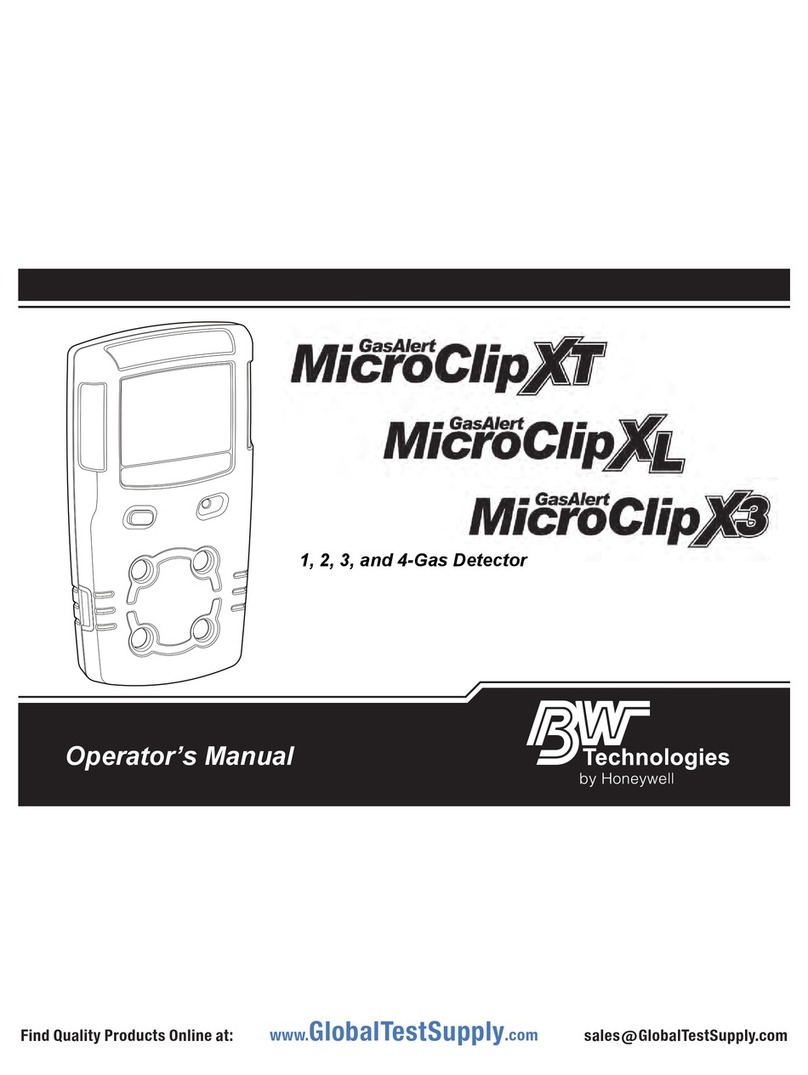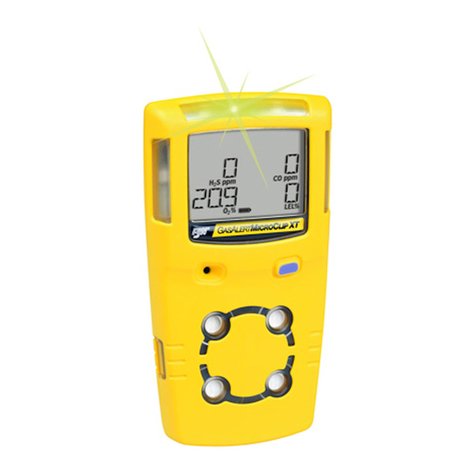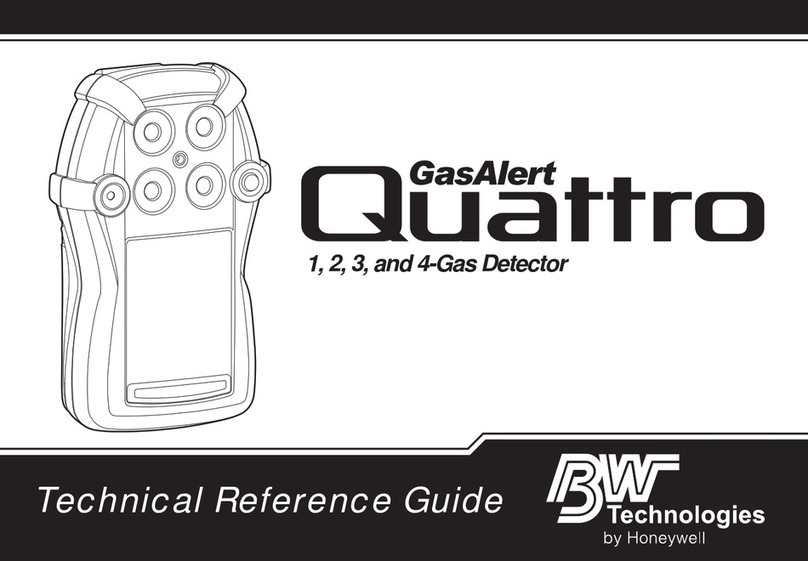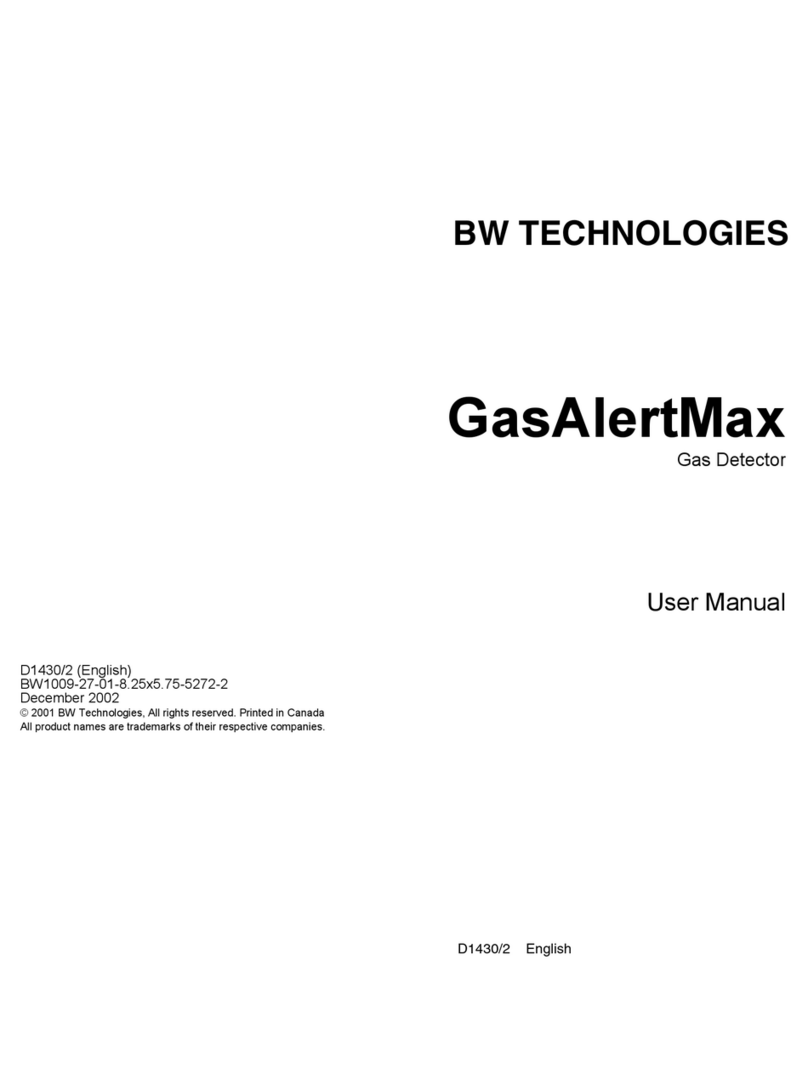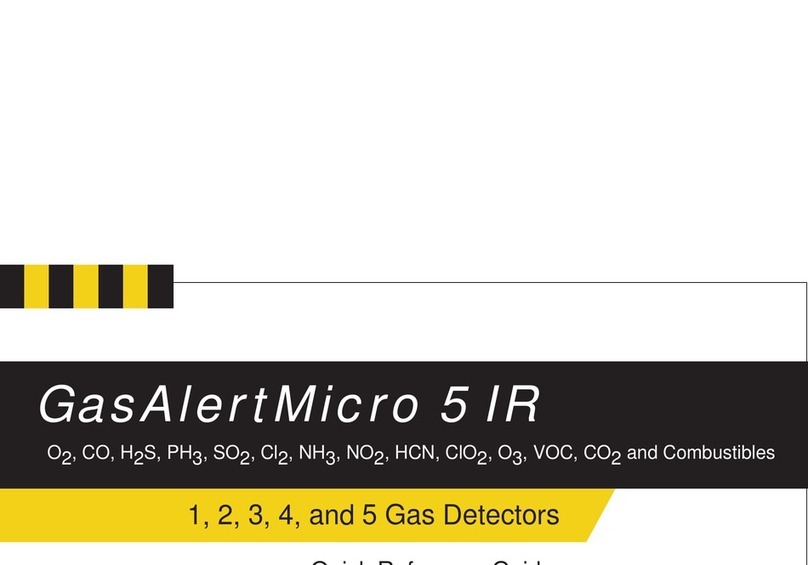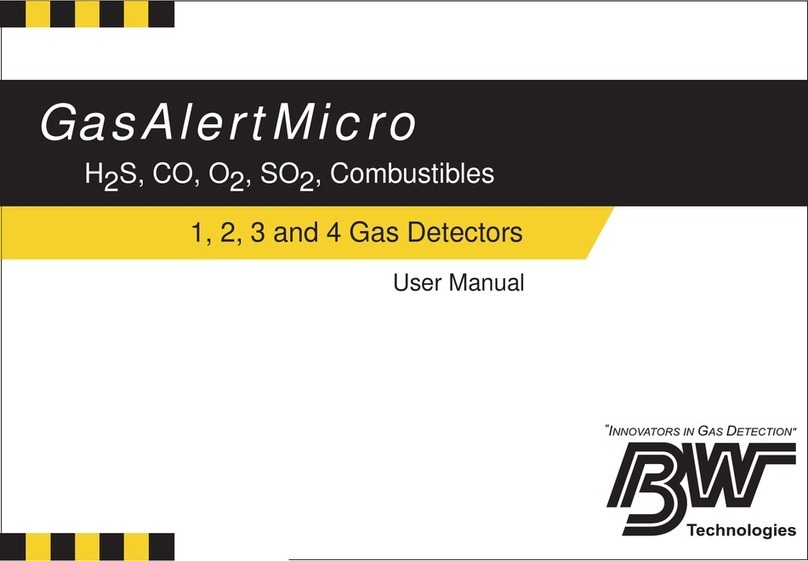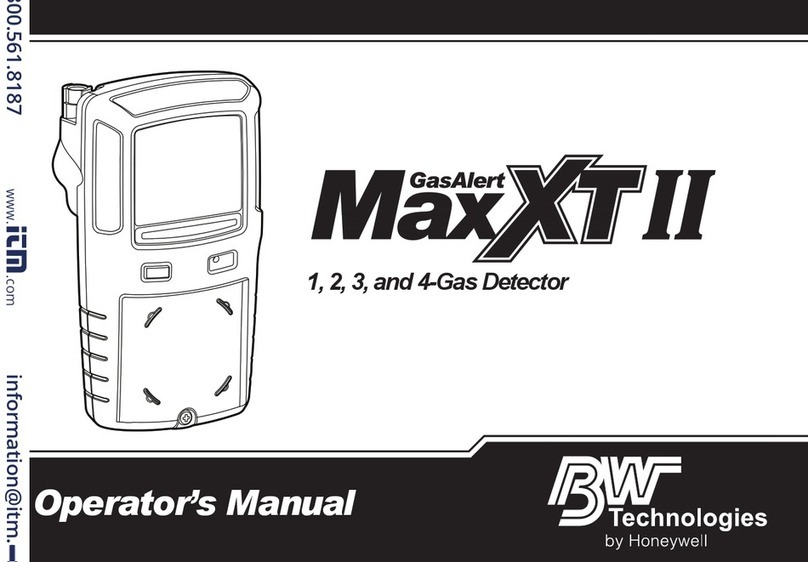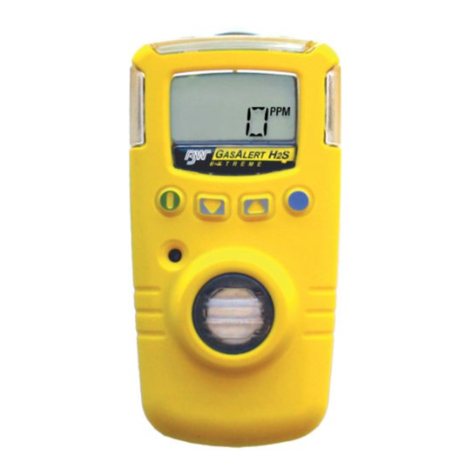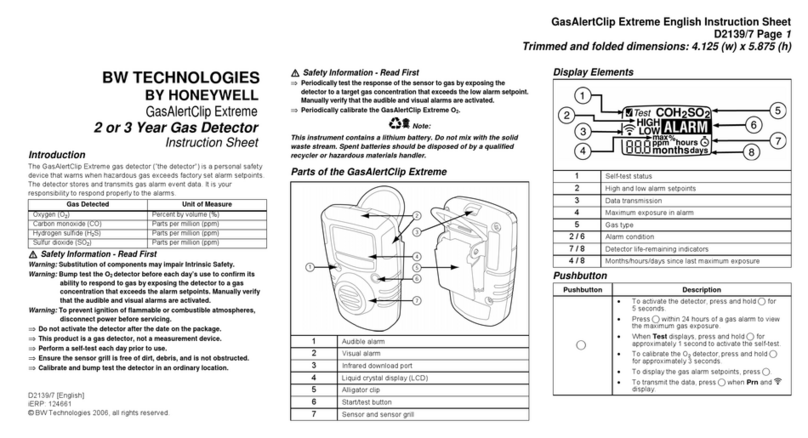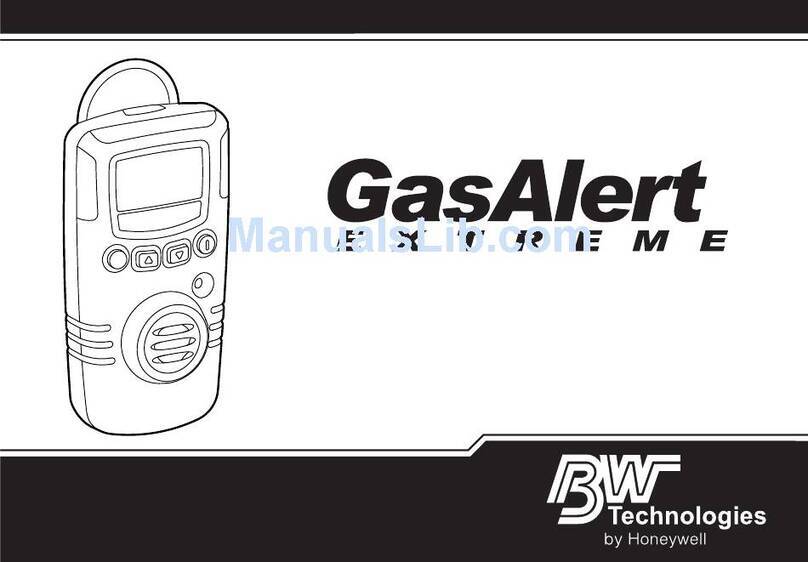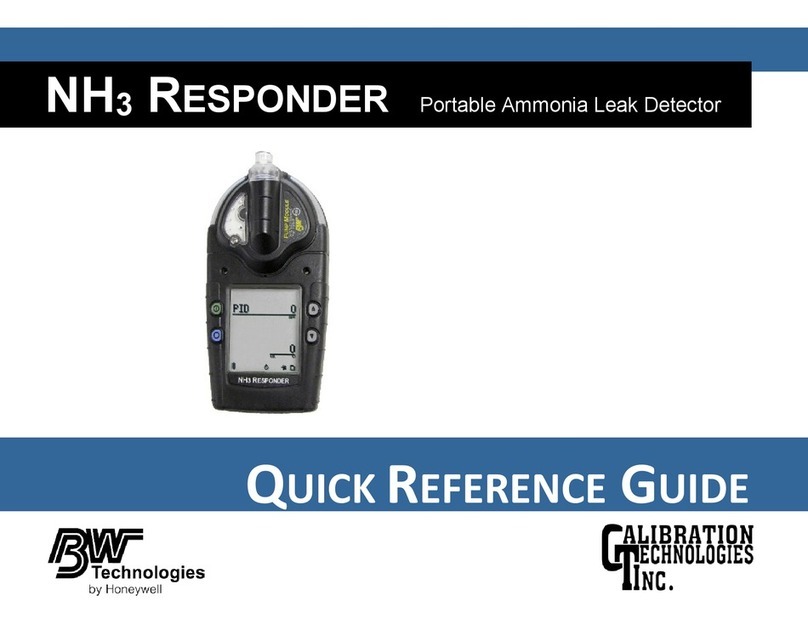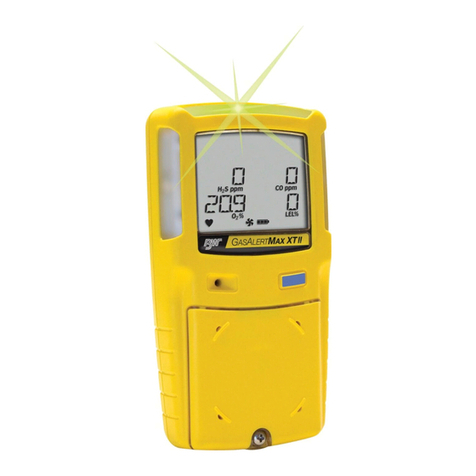ConneX1 Operator’s Manual iii
Table of Contents
1. Introduction....................................................................................1
1.1 Intended Use...........................................................................1
1.2 Product Overview....................................................................2
1.2.1 Parts of the ConneX1 ..................................................2
1.2.2 Display Elements.........................................................3
1.2.3 Buttons.........................................................................4
1.3 Sensor Poisons and Contaminants.........................................5
2. Getting Started...............................................................................6
2.1 Activating/Deactivating the Detector.......................................6
3. Installing Fleet Manager II...........................................................11
3.1 Using Fleet Manager II to Configure the Detector.................11
4. User Options................................................................................13
4.1 General User Options...........................................................13
4.1.1 Message Configuration..............................................15
4.1.2 Mandown Configuration.............................................15
4.1.3 Password Configuration ............................................15
4.2 Sensor and Profile Configuration..........................................16
4.2.1 Profile Options...........................................................16
4.2.2 Sensor Options..........................................................16
4.3 Network Information Options ................................................19
5. Mandown Alarm...........................................................................20
5.1 Break Mode...........................................................................20
6. Panic Alarm..................................................................................21
7. Alarms...........................................................................................21
7.1 Alarm Setpoints.....................................................................24
7.2 Stopping a Gas Alarm...........................................................24
7.2.1 Low and High Alarms.................................................24
7.2.2 TWA and STEL Alarms..............................................24
7.2.3 Acknowledging Latching Alarms................................24
8. Modes ...........................................................................................25
8.1 Standard Operation...............................................................25
8.2 Stealth Mode.........................................................................25
8.3 Safe Mode.............................................................................25
8.4 Review Mode ........................................................................25
8.4.1 Gas Exposure............................................................25
8.4.2 Sensor Details ...........................................................26
8.4.3 Detector Details.........................................................26
8.4.4 Messages ..................................................................26
9. Calibration....................................................................................26
9.1 Calibration Using the IntelliDoX............................................26
9.2 Calibration Guidelines...........................................................26
9.3 Installing the Calibration Cap................................................27
9.3.1 Gas Cylinder Connection...........................................27
9.3.2 Calibration Gas Concentration...................................27
9.4 Manual Calibration Procedure...............................................28
